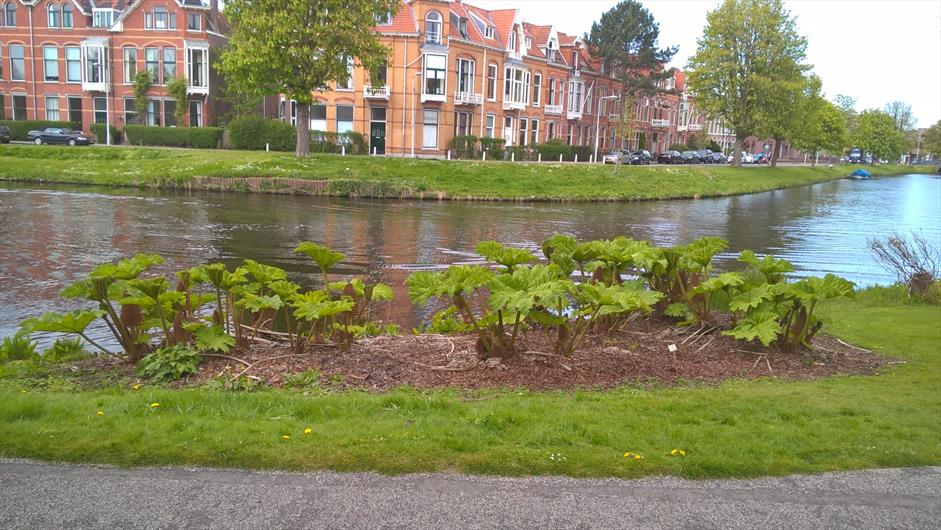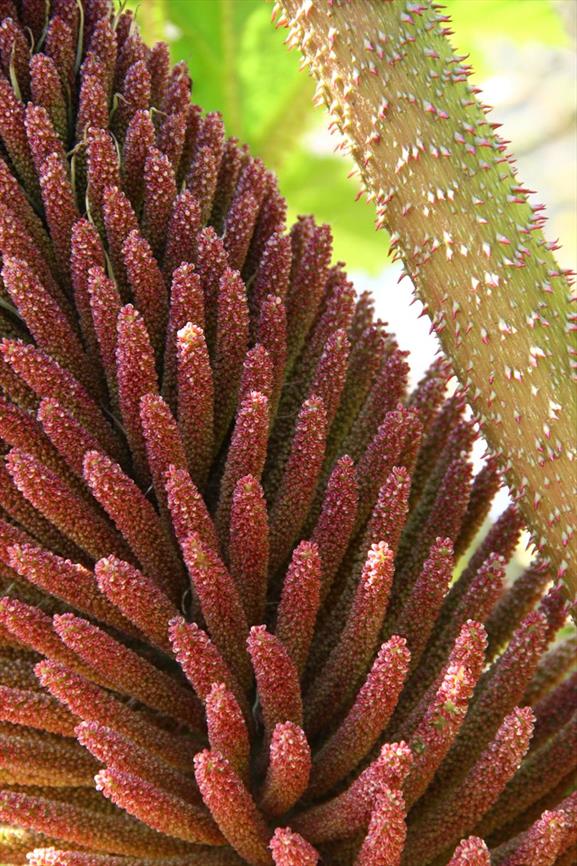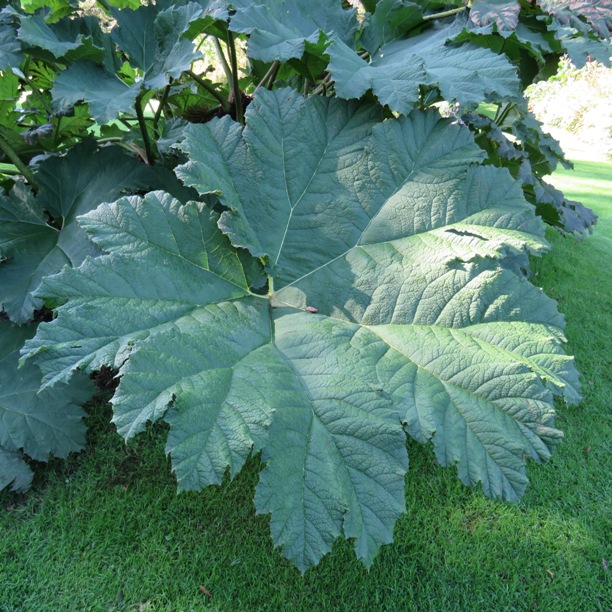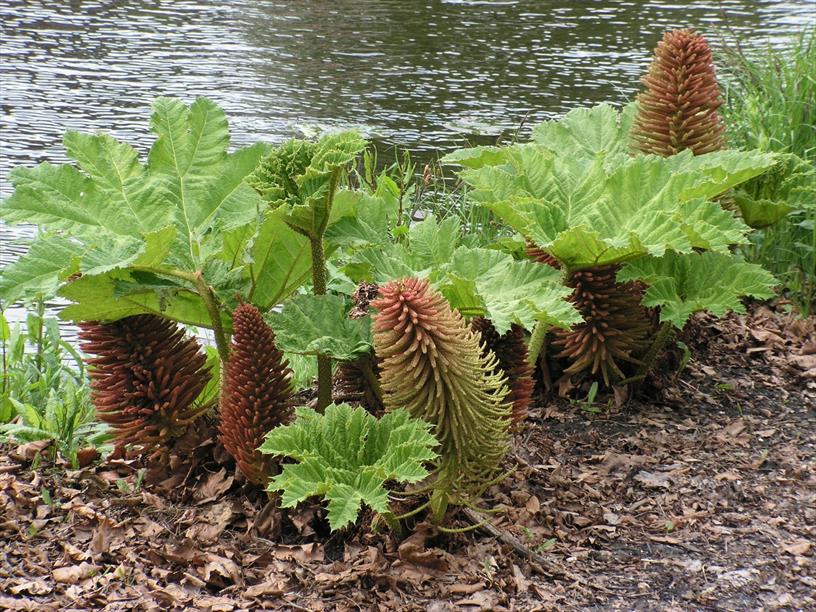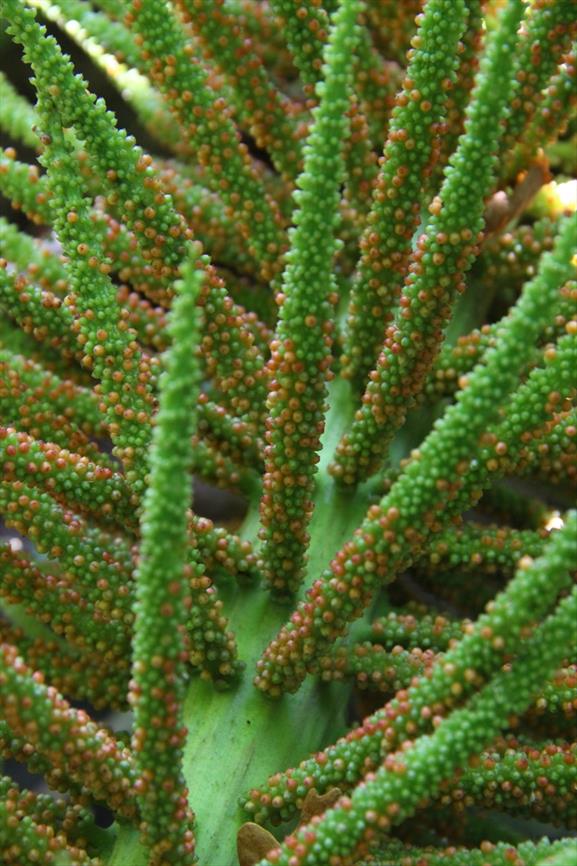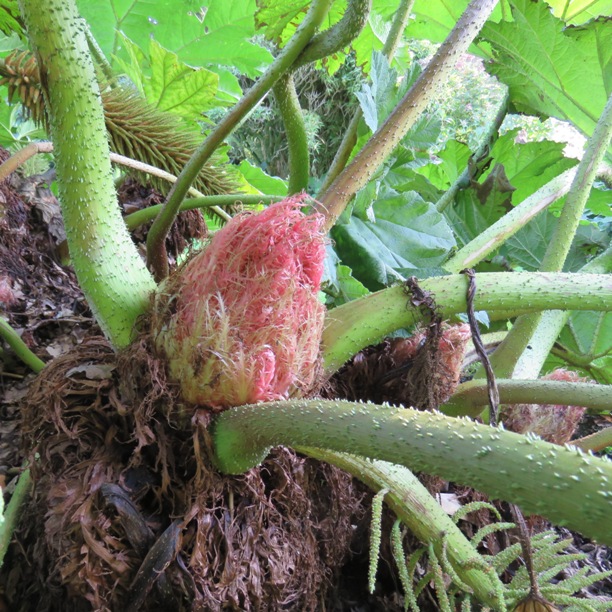Brazilian Giant-rhubarb
Gunnera manicata
Giant rhubarb family (Gunneraceae)
A giant from Brazil
The Dutch name for Chilean rhubarb, or giant rhubarb, is ‘mammoth leaf’ and has acquired its name for a reason: the leaves are simply huge. They grow to more than 2 m high and a diameter of 3 m. The under surface of both the leaf and petiole are covered in spines. The plant requires a damp site, for example next to a pond, and lots of space. The flowers are borne on erect panicles that reach 40 to 60 cm in height.
The Chilean rhubarb is actually native to Brazil where it grows in the humid mountain forests of the southeast. In the northern European climate, winter protection is needed in the form of leaf cover. Despite the name 'giant rhubarb’, Gunnera has nothing to do with rhubarb except its superficial similarity in appearance.
Themes
Crown jewel in the Leiden Botanical Garden, Utrecht Botanic Gardens.
Gunnera is amongst the oldest of angiosperm genera and is the only angiosperm that forms a symbiotic relationship with a blue-green alga (nitrogen-fixing cyanobacteria). With leaves often exceeding of 122 cm in diameter and a spread of 3 m by 3 m on a mature plant, the giant rhubarb is one of the largest herbaceous perennials on earth.
Details
| Description: | Herb, up to 2.5 m. |
|---|---|
| Distributions: | South america from colombia to brazil |
| Habitat: | Damp grassy places, from sea-level to 1000 m in altitude. |
| Year cycle: | Perennial (trees and shrubs included) |
| Hardiness: | 23 - 34 f (half-hardy - unheated glasshouse/mild winter) |
| Flowering period: | Juni - juli |
| Flower color: | Red, green |
| Notes on flowers: | Tiny red-green flowers. |
| Fruiting period: | Augustus - september |
